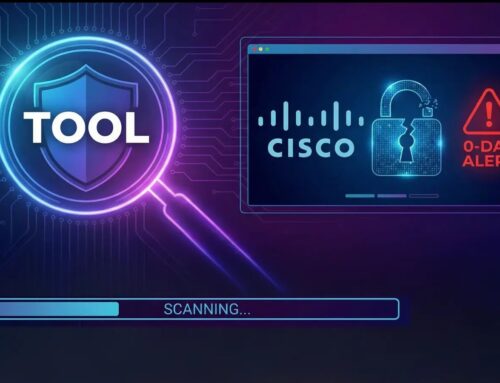
New ‘Plague’ PAM Backdoor Exposes Critical Linux Systems to Silent Credential Theft
A New Shadow in the Linux Landscape: Unmasking the ‘Plague’ PAM Backdoor
In the quiet corners of countless Linux servers, a stealthy threat has been lurking, silently bypassing authentication mechanisms and granting attackers unfettered access. Cybersecurity researchers have recently pulled back the curtain on a previously undocumented Linux backdoor dubbed ‘Plague’, an implant that demonstrates a concerning level of sophistication by masquerading as a legitimate system component. This discovery sends a critical alert to IT professionals and security analysts worldwide, underscoring the constant need for vigilance in securing critical infrastructure.
For over a year, Plague managed to evade detection, underscoring its advanced design and the challenges in identifying highly integrated compromises. Its discovery by Nextron Systems researcher Pierre-Henri Pezier highlights a significant leap in adversary capabilities targeting Linux environments, particularly concerning credential theft and persistent access.
Understanding the ‘Plague’: A Malicious PAM
At the heart of the Plague backdoor’s stealth lies its unique method of infiltration: it’s built as a malicious PAM (Pluggable Authentication Module). This design choice is not coincidental; it provides the attackers with a highly privileged and persistent foothold within the system. But what exactly is a PAM, and why is this approach so effective for a backdoor?
Pluggable Authentication Modules (PAMs) are a fundamental component of Linux and other Unix-like operating systems. They provide a flexible and modular framework for authenticating users and managing their access to system services. Instead of individual applications handling authentication directly, they defer to PAM. This means that services like SSH, sudo, and login, which rely on PAM, can be configured to use various authentication methods (e.g., passwords, Kerberos, biometric data) without needing to be rewritten.
By inserting itself as a malicious PAM, Plague effectively intercepts authentication requests at a low level. This allows it to:
- Silently Bypass Authentication: The backdoor can accept specific credentials or conditions (known only to the attacker) and grant access without raising any flags, effectively creating a hidden master key.
- Gain Persistent SSH Access: Since SSH commonly uses PAM for user authentication, a compromised PAM module provides a direct conduit for persistent, unauthorized remote access, even if legitimate passwords are changed.
- Remain Undetected: Because it operates at such a foundational level, it can be extremely difficult to detect the malicious activity. It doesn’t necessarily leave traditional log entries of failed authentication attempts or suspicious binaries running in the background in obvious ways.
The Silent Threat: Credential Theft Implications
The primary and most alarming capability of the Plague PAM backdoor is its potential for silent credential theft. Unlike traditional malware that might capture keystrokes or dump system memory, a malicious PAM can simply observe and potentially intercept authentication details as they are processed. This means:
- No Brute-Force Attempts: Attackers don’t need to guess passwords; they can wait for legitimate users to authenticate and then capture or bypass those credentials.
- Evasion of Standard Security Controls: Many intrusion detection systems (IDS) and security information and event management (SIEM) solutions are designed to flag suspicious login attempts or unusual network traffic. A PAM-based backdoor operates within the legitimate authentication flow, making it challenging to identify through these conventional means.
- Widespread Impact: Any service on the system that relies on PAM for authentication (SSH, sudo, FTP, local login, etc.) becomes vulnerable to this compromise, turning a single backdoor into a potential gateway to numerous critical services.
The fact that Plague remained undetected for a year highlights the insidious nature of this attack vector. It signifies a shift towards more sophisticated, low-level system compromises that blend seamlessly with legitimate operating system components.
Remediation Actions and Proactive Defenses
Detecting and mitigating a sophisticated PAM-based backdoor like Plague requires a multi-layered security approach. Here are crucial remediation actions and proactive defenses every organization running Linux systems should implement:
- PAM Module Integrity Checks: Regularly verify the integrity of PAM modules. Use tools that can checksum PAM binaries and configurations against known good states. Any deviation should be thoroughly investigated.
- File System Integrity Monitoring (FIM): Deploy robust FIM solutions to monitor critical system directories, especially
/lib/security/and/etc/pam.d/, for unauthorized modifications. Tools like AIDE or OSSEC can alert administrators to changes in these crucial files. - Advanced Endpoint Detection and Response (EDR): Invest in EDR solutions that offer deep visibility into kernel-level activities, process injections, and low-level system calls beyond standard antivirus capabilities.
- Behavioral Anomaly Detection: While the backdoor operates “legitimately,” unusual login patterns (e.g., logins from new geographical locations, at odd hours, to unusual accounts) should still trigger alerts. Monitor user behavior closely.
- Principle of Least Privilege: Enforce strict adherence to the principle of least privilege for all users and services. Limit sudo access and ensure users only have the permissions necessary for their roles.
- Regular Security Audits: Conduct frequent, comprehensive security audits, including penetration testing and vulnerability assessments, with a focus on deep dives into Linux system internals.
- Patch Management: While Plague exploited a design rather than a specific CVE, keeping all system software and kernels up-to-date is fundamental to preventing other common attack vectors that could lead to initial compromise.
- Network Segmentation: Isolate critical servers on separate network segments. This limits the lateral movement of attackers if one system is compromised.
Recommended Tools for Detection and Mitigation
| Tool Name | Purpose | Link |
|---|---|---|
| AIDE (Advanced Intrusion Detection Environment) | File system integrity checking, detect unauthorized modifications to critical files like PAM modules. | https://aide.github.io/ |
| OSSEC HIDS | Host-based Intrusion Detection System that includes FIM, log analysis, and rootkit detection capabilities. | https://www.ossec.net/ |
| YARA | Pattern matching tool for identifying and classifying malware. Security teams can write YARA rules for Plague artifacts once identified. | https://virustotal.github.io/yara/ |
| eBPF-based Security Tools (e.g., Falco) | Deep visibility into system calls and kernel activities, capable of detecting unusual process behavior or unauthorized system resource access. | https://falco.org/ |
The Evolving Threat Landscape for Linux Systems
The emergence of the Plague PAM backdoor is a stark reminder that attackers are continually innovating, developing more sophisticated and evasive techniques. Linux systems, long considered a bastion of stability and security, are increasingly becoming prime targets due to their pervasive use in critical infrastructure, cloud environments, and enterprise servers.
Security teams must evolve their defenses beyond traditional signatures to embrace behavioral analysis, integrity monitoring, and deep system visibility. Staying informed about new threats, sharing intelligence, and adopting a proactive security posture are paramount to safeguarding Linux environments against stealthy adversaries like the ‘Plague’. The battle for cybersecurity is continuous, and understanding these new threats is the first step in effective defense.





